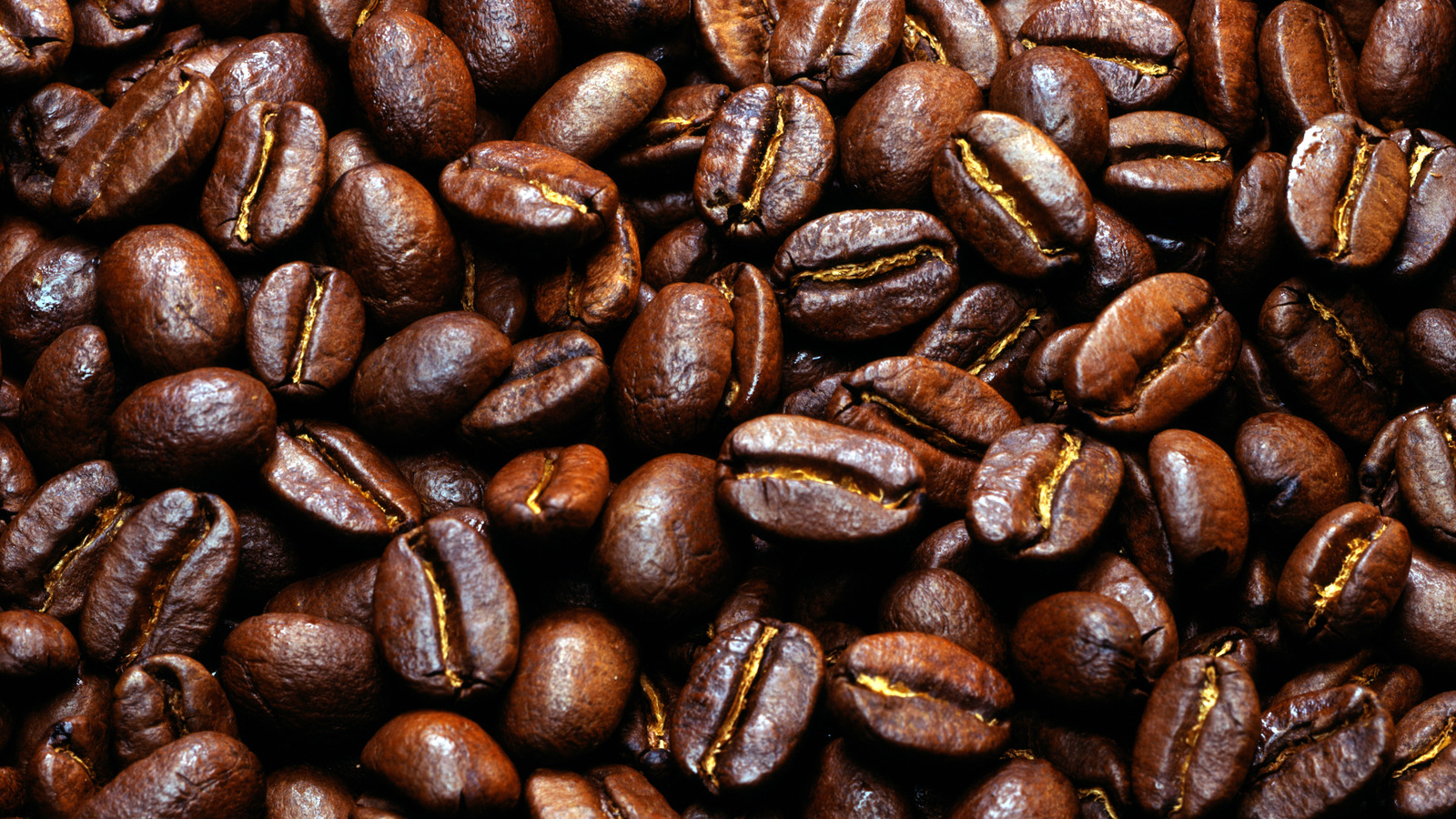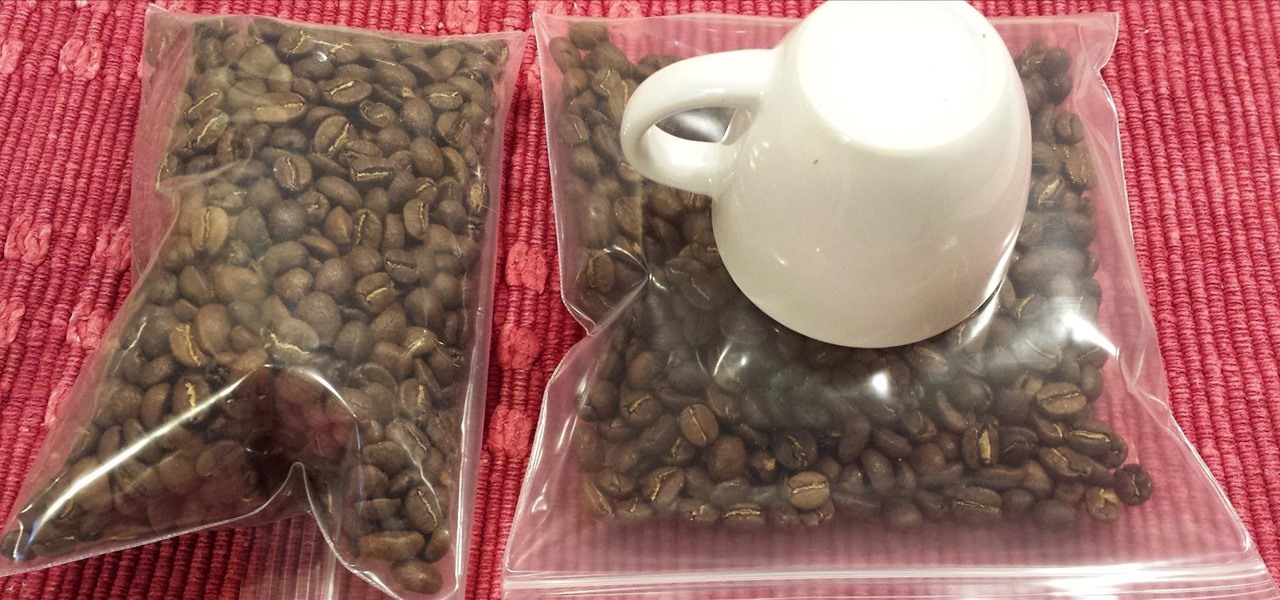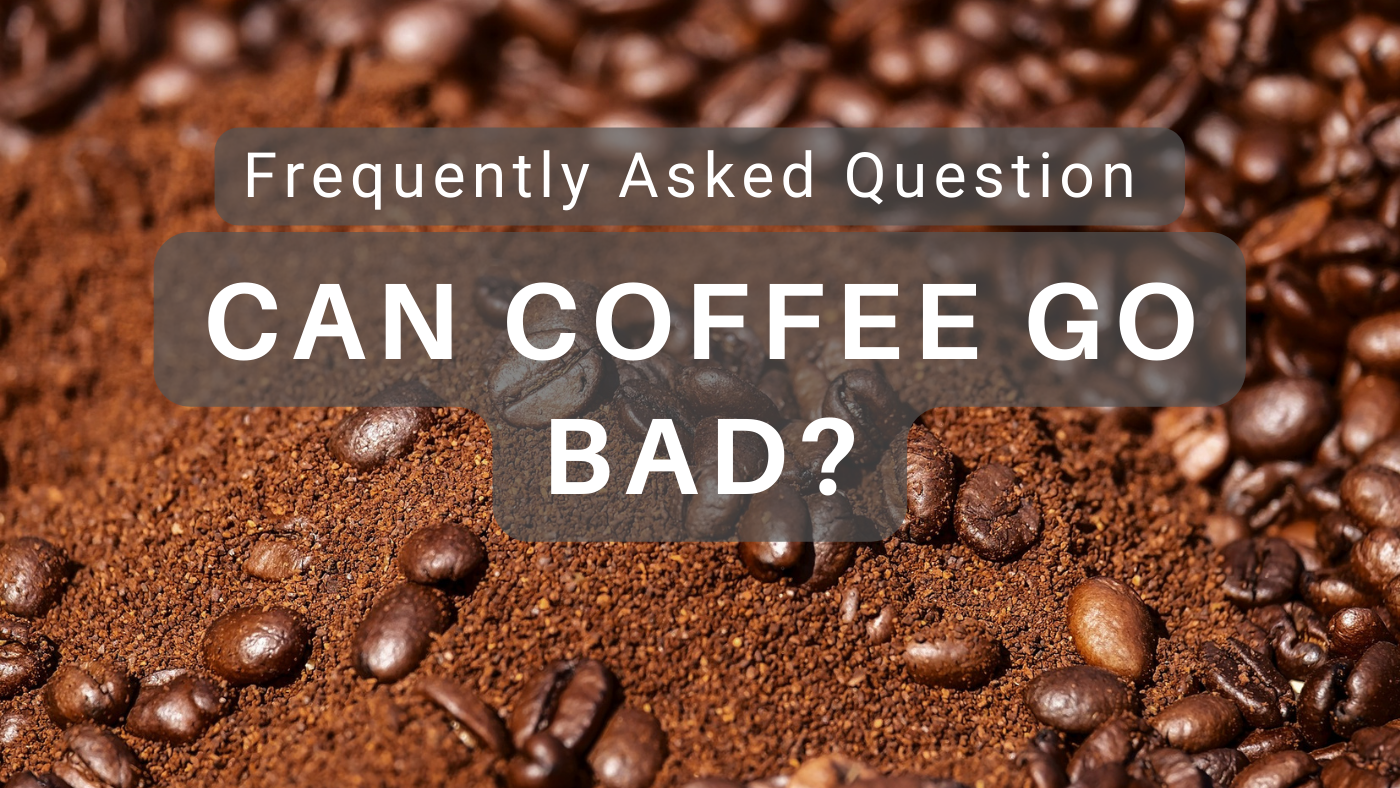As an Amazon Associate CoffeeXplore.com earns from qualifying purchases.
How to Tell If Coffee Is Bad: Signs, Tips, and Freshness Guide
Discovering stale coffee in your morning brew can ruin your entire day. But how can you tell if your coffee has gone bad before it reaches your cup?
Many coffee lovers struggle with uncertainty about their coffee’s freshness, risking either wasting perfectly good beans or consuming stale, potentially harmful coffee.
To tell if coffee has gone bad, check for these key indicators: loss of aroma, visible mold, rancid smell, or a flat, stale taste. Fresh coffee should have a rich aroma and appear dry and oil-free, while bad coffee often smells musty and may show signs of moisture damage.
As a certified coffee quality grader with over a decade of experience in coffee roasting and brewing, I’ve encountered countless instances of spoiled coffee. In this comprehensive guide, I’ll share professional insights on identifying bad coffee, understanding what causes coffee to spoil, and learning proper storage techniques to maintain freshness. Whether you’re a casual coffee drinker or a dedicated enthusiast, you’ll discover everything you need to know about keeping your coffee fresh and knowing when it’s time to say goodbye to those beans.
Key Facts:
– Coffee doesn’t technically expire but loses freshness 2-4 weeks after roasting
– Whole beans stay fresh longer than ground coffee due to less surface area exposure
– Properly stored coffee can maintain quality for up to 9 months
– Moisture is the primary enemy of coffee freshness, leading to mold growth
– Coffee can absorb odors and flavors from its surroundings, affecting taste quality
Visual comparison of fresh vs stale coffee beans – source
What Makes Coffee Go Bad?
Coffee primarily deteriorates through oxidation, moisture exposure, and improper storage conditions. The degradation process begins immediately after roasting, with factors like oxygen, heat, light, and humidity accelerating the loss of flavor compounds and aromatic oils.
Understanding Coffee Oxidation and Degradation
When coffee beans are roasted, they undergo significant chemical changes that create the complex flavors we love. However, these same compounds begin breaking down as soon as they’re exposed to oxygen. According to Coffee Bros, this process, known as oxidation, is similar to how an apple browns after being cut – it’s natural but affects quality over time.
The oxidation process particularly impacts:
– Aromatic compounds
– Essential oils
– Flavor molecules
– Antioxidants
Key Takeaway: To minimize oxidation, store coffee in an airtight container and only grind beans just before brewing.
The Science Behind Coffee Freshness
Coffee freshness isn’t just about age – it’s about chemical stability. Research from Era of We shows that coffee contains over 1,000 chemical compounds that contribute to its flavor and aroma. These compounds are highly volatile and begin degrading due to:
- Temperature fluctuations
- Light exposure
- Moisture contact
- Air exposure
Key Timeline: From Roasting to Expiration
Understanding the coffee freshness timeline helps identify when your coffee might go bad. According to HiLine Coffee, here’s how coffee quality changes over time:
- 0-7 days post-roast: Peak flavor and aroma
- 1-2 weeks: Optimal drinking window
- 2-4 weeks: Still good but subtle flavor decline
- 1-3 months: Noticeable decrease in quality
- 3+ months: Significant degradation of taste and aroma
Key Takeaway: For the best coffee experience, use whole beans within one month of roasting and ground coffee within two weeks of grinding.

Visual indicators of spoiled coffee beans – source
How Can You Tell If Coffee Has Gone Bad?
Coffee shows clear signs of spoilage through visual cues, aroma changes, and taste differences. Look for mold growth, check for musty smells, and notice if the coffee tastes flat or rancid.
Visual Signs of Spoiled Coffee
When examining your coffee, Roasty Coffee recommends looking for these indicators:
- Surface Appearance:
- Fresh coffee: Dry, slightly oily (dark roasts)
- Bad coffee: Excessive moisture, white spots (mold)
- Color Changes:
- Fresh coffee: Rich, consistent color
- Bad coffee: Faded, discolored patches
- Physical State:
- Fresh coffee: Intact beans/grounds
- Bad coffee: Clumping, caking
What Bad Coffee Smells Like
Your nose is one of the best tools for detecting spoiled coffee. Coffee Beans Delivered explains that fresh coffee should have a strong, pleasant aroma. Here’s what to watch for:
Fresh Coffee Smells Like:
– Rich and aromatic
– Chocolatey or fruity notes
– Sweet undertones
Bad Coffee Smells Like:
– Musty or moldy
– Rancid oil
– Cardboard-like
– No smell at all
Key Takeaway: If your coffee lacks its characteristic aroma or smells off, it’s likely past its prime and should be replaced.
Taste Indicators of Stale Coffee
The ultimate test comes down to taste. Here’s how to identify bad coffee through taste:
Fresh Coffee Characteristics:
– Complex flavor profile
– Pleasant acidity
– Smooth finish
– Distinct taste notes
Stale Coffee Signs:
– Flat, one-dimensional taste
– Bitter or sour notes
– Unpleasant aftertaste
– Lack of complexity
Examining Coffee Beans vs. Ground Coffee
The signs of spoilage differ between whole beans and ground coffee. According to Healthline, ground coffee deteriorates faster due to increased surface area exposure. Here’s what to look for in each:
Whole Beans:
– Should feel dry but not brittle
– Minimal oil unless dark roasted
– Strong aroma when crushed
– No visible mold
Ground Coffee:
– Should be free-flowing
– Consistent texture
– Fresh, potent smell
– No clumping or moisture

How to check coffee bean freshness – source
What Are the Different Types of Coffee Spoilage?
Coffee can spoil in several distinct ways, primarily through mold growth, oxidation, and chemical degradation. Each type of spoilage presents unique characteristics and occurs under different conditions.
Mold and Moisture Damage
Moisture is coffee’s biggest enemy. According to Coffee Bros, when coffee beans or grounds are exposed to moisture, they become susceptible to:
- Visible Mold Growth:
- White or greenish spots
- Fuzzy patches
- Discolored areas
- Hidden Moisture Issues:
- Clumping of grounds
- Musty odor
- Changes in texture
Key Takeaway: Never store coffee in the refrigerator unless in an absolutely airtight container, as condensation can lead to mold growth.
Oxidation and Staleness
Roasty Coffee explains that oxidation affects coffee in several ways:
Physical Changes:
– Loss of natural oils
– Dull appearance
– Brittle texture
Chemical Changes:
– Degraded flavor compounds
– Diminished aromatics
– Increased bitterness

Visual guide to coffee oxidation – source
Chemical Changes in Stored Coffee
The chemical composition of coffee continues to change even after roasting. Era of We details these changes:
- Flavor Compound Degradation:
- Loss of fruity/floral notes
- Decreased sweetness
- Increased astringency
- Aroma Changes:
- Reduction in volatile compounds
- Loss of complexity
- Development of off-flavors
- Structural Changes:
- Cell structure breakdown
- Oil migration
- Moisture redistribution
Impact of Improper Storage
Poor storage conditions accelerate coffee deterioration. Here’s how different storage mistakes affect your coffee:
Temperature Fluctuations:
– Cause moisture condensation
– Speed up chemical reactions
– Lead to flavor inconsistencies
Light Exposure:
– Degrades flavor compounds
– Increases oxidation rate
– Affects bean structure
Air Contact:
– Accelerates staleness
– Promotes rancidity
– Reduces aroma intensity
Key Takeaway: Store coffee in an opaque, airtight container at room temperature, away from direct sunlight and heat sources.
Does Coffee Actually Expire?
Coffee doesn’t technically expire in terms of food safety, but it does lose freshness and flavor quality over time. Whole beans typically maintain optimal flavor for 2-6 months after roasting, while ground coffee stays fresh for 3-5 months when properly stored.
Understanding Coffee Expiration Dates
According to Healthline, coffee expiration dates are more about quality than safety. Here’s what you need to know:
“Best By” Dates:
– Indicate peak freshness period
– Not actual expiration dates
– Quality guarantee timeline
– Conservative estimates
Actual Shelf Life:
– Depends on storage conditions
– Varies by coffee type
– Influenced by packaging
– Affected by processing method
Key Takeaway: Focus on storage conditions and freshness indicators rather than printed dates to determine coffee quality.
Whole Beans vs. Ground Coffee Shelf Life
The form of your coffee significantly impacts its longevity. Coffee Annan provides this comparison:
Whole Beans:
– Peak freshness: 2-4 weeks
– Maximum quality: 6 months
– Storage life: Up to 9 months
– Optimal when: Properly stored
Ground Coffee:
– Peak freshness: 1-2 weeks
– Maximum quality: 3-5 months
– Storage life: Up to 6 months
– Degrades: More quickly due to increased surface area

Comparison of fresh vs. expired coffee – source
How Long Brewed Coffee Stays Fresh
Brewed coffee has a much shorter window of freshness. Here’s the timeline for optimal consumption:
Room Temperature:
– Best within: 30 minutes
– Maximum: 4 hours
– After that: Quality rapidly declines
Refrigerated:
– Best within: 24 hours
– Maximum: 3-4 days
– Risk factors: Bacterial growth
For more detailed information about coffee storage and freshness, visit our guide on how long ground coffee can last.
Safety Concerns with Old Coffee
While old coffee rarely poses serious health risks, there are some considerations:
Potential Issues:
– Mold development
– Bacterial growth
– Rancid oils
– Off-flavors
When to Avoid:
– Visible mold present
– Strong off-odors
– Excessive moisture
– Unusual texture
Key Takeaway: While stale coffee won’t typically make you sick, moldy coffee should always be discarded to avoid potential health risks.
How Should You Store Coffee Properly?
The key to maintaining coffee freshness is proper storage in an airtight, opaque container at room temperature, away from light, heat, and moisture. This preserves flavor compounds and prevents premature degradation.
Optimal Storage Containers and Conditions
To maximize coffee freshness, Coffee Bros recommends specific storage solutions:
Best Container Types:
– Ceramic containers with airtight seals
– Opaque glass jars with rubber gaskets
– Purpose-built coffee vaults
– Bags with one-way degassing valves
For detailed information about coffee storage, check our guide on why coffee beans are roasted and how it affects storage requirements.
Optimal Storage Conditions:
– Temperature: 68-77°F (20-25°C)
– Humidity: Below 60%
– Light exposure: Minimal
– Air contact: Limited
Common Storage Mistakes to Avoid
Roasty Coffee identifies these frequent storage errors:
- Major Mistakes:
- Storing in the refrigerator
- Using clear containers
- Keeping near heat sources
- Leaving bags open
- Subtle Errors:
- Frequent container opening
- Inconsistent storage locations
- Mixed storage of different roasts
- Ignoring humidity levels
Key Takeaway: Avoid storing coffee in the refrigerator unless vacuum-sealed, as temperature fluctuations cause condensation and flavor degradation.
Temperature and Humidity Considerations
Managing environmental factors is crucial for coffee storage. Here’s what experts at Era of We suggest:
Temperature Control:
– Keep away from ovens and stovetops
– Avoid windowsills
– Maintain consistent temperature
– Use insulated containers
Humidity Management:
– Use moisture-absorbing packets
– Monitor storage area humidity
– Check for condensation
– Ensure proper ventilation
Best Practices for Different Coffee Forms
Different types of coffee require specific storage approaches:
Whole Beans:
– Use within 30 days of roasting
– Store in small batches
– Minimize air exposure
– Consider vacuum sealing
Learn more about bean storage in our article about coffee bean expiration.
Ground Coffee:
– Use within 2 weeks
– Store in smaller portions
– Double-seal containers
– Check frequently for freshness
Brewed Coffee:
– Consume immediately
– Store in airpot if needed
– Avoid reheating
– Discard after 4 hours

Proper coffee storage solutions – source
What Can You Do With Stale Coffee?
Rather than discarding stale coffee, repurpose it for various household uses, cooking applications, or garden projects. While it may have lost its drinking quality, stale coffee still retains properties useful for other purposes.
Creative Uses for Old Coffee Beans
According to Coffee Beans Delivered, stale beans can still be valuable:
- Culinary Applications:
- Coffee rubs for meat
- Baking ingredients
- Ice cream flavoring
- Marinades
- Home Projects:
- Natural deodorizer
- Wood staining
- Scratch cover
- Antique finish
Key Takeaway: While stale coffee might not make the perfect cup, it can still add value to your kitchen and home projects.
Repurposing Expired Ground Coffee
HiLine Coffee suggests these practical uses for expired ground coffee:
Garden Applications:
– Compost enhancement
– Natural fertilizer
– Pest deterrent
– Soil amendment
Beauty Uses:
– Body scrub
– Face mask
– Hair rinse
– Natural dye
For more information about coffee expiration and reuse, visit our guide on does coffee have an expiration date.
Alternative Applications in Home and Garden
Stale coffee can serve multiple purposes around your home:
- Cleaning Uses:
- Natural scrubbing agent
- Drain cleaner
- Odor absorber
- Grease cutter
- Garden Benefits:
- Slug repellent
- Worm attraction
- pH adjustment
- Mushroom growing
When to Simply Discard Coffee
Sometimes, coffee is beyond repurposing. Healthline advises discarding coffee when:
Definite Disposal Signs:
– Visible mold growth
– Strong rancid smell
– Excessive moisture
– Chemical odors
FAQs About Bad Coffee:
Q: Can drinking expired coffee make you sick?
A: While expired coffee generally won’t make you sick, coffee with visible mold or that has been exposed to moisture can harbor harmful bacteria and should be avoided.
Q: How long does unopened coffee last?
A: Unopened whole bean coffee typically lasts 6-9 months when properly stored, while ground coffee remains fresh for 3-5 months in sealed packaging.
Q: Should you refrigerate coffee beans?
A: No, refrigerating coffee beans is not recommended as temperature fluctuations cause condensation, leading to moisture damage and flavor degradation.
Q: Why does coffee develop a rancid smell?
A: Coffee develops a rancid smell due to oxidation of its natural oils and exposure to moisture, heat, or light, which break down the coffee’s chemical compounds.
Q: Does vacuum-sealed coffee last longer?
A: Yes, vacuum-sealed coffee can last 2-3 times longer than coffee stored in regular containers by preventing oxidation and moisture exposure.
Q: Can you freeze coffee to extend its life?
A: Yes, coffee can be frozen if properly sealed to prevent moisture, but it should only be thawed once to avoid condensation issues.
Q: What’s the difference between stale and spoiled coffee?
A: Stale coffee has lost its flavor and aroma but is still safe to consume, while spoiled coffee shows signs of mold or contamination and should be discarded.
Q: How long does coffee last in an airtight container?
A: In an airtight container, whole beans can last 6-9 months, while ground coffee maintains freshness for 3-5 months.
Q: Does dark roast coffee last longer than light roast?
A: No, roast level doesn’t significantly affect shelf life, though dark roasts may appear oilier due to the roasting process.
Q: Can you still use coffee that’s past its best-by date?
A: Yes, coffee past its best-by date is generally safe to use if properly stored and showing no signs of spoilage, though flavor quality may be diminished.
Summary:
Knowing how to tell if coffee is bad is essential for both enjoying your daily brew and ensuring food safety. Through visual inspection, aroma assessment, and taste evaluation, you can easily identify whether your coffee has maintained its quality or needs to be replaced.
Remember these key indicators of coffee freshness:
– Strong, pleasant aroma
– Dry, oil-appropriate appearance
– Complex flavor profile
– Proper storage conditions
While coffee doesn’t technically expire, its quality deteriorates over time. By following proper storage guidelines and understanding the signs of spoilage, you can maximize your coffee’s lifespan and ensure every cup is fresh and flavorful. When in doubt, trust your senses – if your coffee looks, smells, or tastes off, it’s better to start fresh with a new batch.
Consider implementing the storage recommendations discussed above to maintain your coffee’s freshness, and don’t forget that even stale coffee can find new life in various household applications. Your journey to better coffee starts with understanding these fundamental aspects of coffee freshness and storage.


